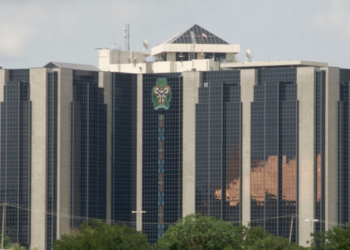The Monetary Policy Committee held its first meeting of the year on the 21st and 22nd
of January 2019. The Committee voted to maintain the MPR at 14.00%, CRR at 22.5%
while also retaining the asymmetric corridor at +200bps & -500bps and liquidity rate
at 30%.
The Committee considered the divergent performance across most economies in
2018, which led to the moderated global output. The Committee further noted the
rising global uncertainties due to the increasing financial market volatilities, trade
tension between the US and China, slowdown in Chinese economy, amongst others.
On the back of increased downside risks, the IMF moderated its global growth
projection to 3.5% from 3.7%.
In the domestic space, the Committee noted the improvement of some key economic
indicators in 2018, which includes; the gradual improvement in output growth,
Q3:2018’s GDP grew by 1.81% from 1.50% in Q2:2018; stability in exchange rate,
supported by the continuous CBN interventions; and the moderation in inflation rate
for most part of the year.
The heightened political uncertainties due to the upcoming elections may continue
to weigh on activities within the financial market. The decision to keep rates
constant should therefore not have any major impact on the performance of the
equities and fixed income markets.
Committee’s Considerations
- The Committee assessed both the global and domestic macroeconomic and
financial environment in 2018. The Committee considered the key risks and
outlook in the short to medium term. - In the global economy, the Committee noted the heightened uncertainties in
2019, as a result of factors such as the increasing financial market volatilities,
trade war between the US and its key allies, continued monetary policy
normalization by the US, negotiations surrounding Brexit, and the slowdown in
China. - On the domestic front, the Committee commended the improved output growth
as shown by the higher GDP growth of 1.81% in Q3:2018 from 1.5% in Q2:2018.
The Committee highlighted the major drivers of growth to include the services
and agriculture sectors, but however mentioned that the herdsmen and farmers
conflict, alongside flooding in some part of the countries moderated agricultural
and livestock outputs. While growth in 2019 is expected to be driven by improved
oil and non-oil sector receipts, the Committee however stated that the growth
outlook remains fragile. - The resurgence of inflationary pressure in the economy was of concern to the Committee, as the headline inflation rate inched up to 11.44% in December 2018
from 11.28% in November 2018. The Committee observed that the near-term risk
to inflation remains the residual impact of flooding on agricultural output,
insecurity in agriculture producing states and campaign related spending towards
the 2019 general election. - The Committee stated the improvement in credit to the private sector and the
government in December 2018. The Committee noted the aggressive growth in
credit to the private sector which has been a constraint to real sector growth and
further expressed optimism for improved lending to MSMEs in the economy. - In the case for tightening, which was more likely, the Committee noted that
tightening will result in the reversal of gains achieved thus far and will drive banks
to reprice assets, thus increasing the cost of credit and elevating credit risk in the
economy. The Committee further noted that it may result in an increase in Non-Performing loans, and also dampen investments and the improvement noted in
output growth.
▪ Key Decisions
- Maintain MPR at 14%
- Maintain CRR at 22.50%
- Retain liquidity ratio at 30%
- Retain asymmetric corridor at +200 and -500bps around the MPR.
Anticipated Impacts
Unflinching Investors’ sentiment, despite MPC Decision
Since the last MPC meeting, Treasury bills yields have remained relatively high,
recording a 0.53% increase to reach 14.69% on January 22, 2019. The secondary market for bonds however recorded a 0.24% decline in yields to settle at 15.21% on January 22,2019. The high yield in both markets, coupled with the poor performance of the equities space due to the cautious choice for low-risk investments should continue to encourage the influx of participants to the fixed income space. Consequently, we do not foresee any changes in the yield environment, due to the decision to keep the rate constant.
Loan performance continues to Improve
At the recent meeting, the MPC noted the encouraging growth in the lending to the
private sector in 2018. The Committee however reiterated the need for improved
lending to the private sector as net credit to the private sector increased by 5.13% YoY
in November 2018, annualized to 4.95% which was lower than the 2018 benchmark
rate of 12.4%. The MPC also expressed satisfaction regarding the reduction in the level
of NPLs in the banking sector.
We expect that with the intensified efforts towards increasing credit to the private
sector, the improved asset quality and partnership between the Banker’s committee
and Nigeria Incentive-Based Risk Sharing System for Agricultural Lending (NIRSAL)
will go a long way towards achieving this goal. We also envisage some payment to
contractors by the government in the coming months which should further
moderate the NPLs in the banking sector.
Improved Activities within the Real Sector
The credit to the real sector improved towards the end of 2018. Increased funding
came through the industry-wide interventions such as the anchor borrowers’
programme, CBN agribusiness scheme and MSME funds. By December 2018, the real
sector sustained its healthy performance, with the manufacturing PMI rising by 2.2pts
to 61.1pts, the highest in 2018.
The industry’s economic welfare was also buoyed by the continuous FX interventions
by the CBN; however, the sector faced some headwinds as consumer spending grew
slowly, moderating the growth in the sales of goods and services offered by the
sector. Logistical challenges, owing to insecurity and flooding also pressured growth.
Despite the political uncertainties which heightened towards the end of 2018, the
sector grew, owing to the incentives put in place by the CBN. We expect the CBN to
continue to support the real sector through concessionary lending schemes and
moral suasion strategies with the banks. We also expect the continued CBN intervention to sustain FX liquidity and stability, in a bid to curtail FX pressures in the industry.
The Market Set to Look Away
The mood in the equities market remains largely negative. Increased political
uncertainty ahead of the elections continues to sour investor confidence. Opportunities
for bargain hunting has however supported the moderation of the decline in the
NSEASI. We do not expect the decision to hold rates to alter the current bearish course of the market, especially given the attractive yield environment in the fixed income space.
In our opinion, the prevailing political risks has more weight in dictating the current course of market activities, at least for the rest of this quarter.























